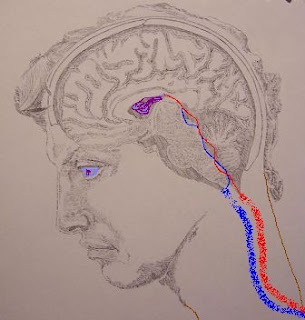 |
| Behavior modifies genes and microbes |
So, before proceeding let's clear the air of some of the fog that perception might generate.
First, let's note again for the record that Toxins of Power Blog has posted from the inception of these series the assertion that behavior can lead to conditions for the generation of toxins of power.
However, equally important is the repeated assertion that behavior can also control or neutralize those toxins by generating anti-toxins.
So let's reflect on quotes from earlier posts to firm up that aspect, noting the notion of anti-toxins:
This formula shows that the exercise of any official is to resist corrupting toxins via antitoxins. The goal is to bring "T" and "A" to the same value, so that T - A sums to zero.(Tables For The Toxins In Power). Fundamentally the hypothesis provides tables which indicate that some behaviors are toxic so those behaviors are likely to increase the presence of toxins of power, but to the contrary other behaviors are anti-toxic and are therefore likely to decrease the presence of toxins of power.
...
Finally, we need to ask what [behaviors], then, are toxins and what are their numeric values, and what [behaviors] are antitoxins and what are their numeric values.
Moving on to the meme aspect of the hypothesis, this would mean that memetic morph is unlikely to take place if certain anti-toxic behaviors are practiced:
In the first post of this series we talked about memetic morph whereby a meme changes through some corruption of memory.(A Structure RE: Corruption of Memes - 2). Moving on to the hypothesis that microbes are the source for the origin of toxins of power, this indicates that certain behaviors increase the likelihood of microbial generation of toxins, but other behaviors decrease that likelihood.
Some of the morph that takes place in such a case has been described in our series as a partial corruption of the strands of memes within an individual's memory.
One allegorical or symbolic example can be demonstrated by comparing what happens when there is a phenomenon that appears as an "innocent corruption of memory" described by Dr. Roger A. Pielke Sr. engendered by the inaccurate reading of text.
Even this can lead to memetic morphs that generate corrupt memes then their propagation throughout a meme complex, and even beyond that.
We have support for that, in principle, from another post:
"the genetic argument allows us the luxury of ignoring past and present historical and social factors. In the words of Louis Menand who wrote in the New Yorker very astutely:(The "It's In Your Genes" Myth). The bottom line of these hypotheses is that behavior is a functional aspect of both toxin increase as well as toxin decrease, depending on the type of behavior.
“It’s all in the genes”: an explanation for the way things are that does not threaten the way things are. Why should someone feel unhappy or engage in antisocial behavior when that person is living in the freest and most prosperous nation on Earth? It can’t be the system! There must be a flaw in the wiring somewhere.”... which is a good way to put it. So the genetic argument is simply a cop-out that allows us to ignore the social and economic and political factors that in fact underlie many troublesome behaviors" (Dr. Maté).
It is important to note that this is not in conflict with the research, but to the contrary it is supported by the research.